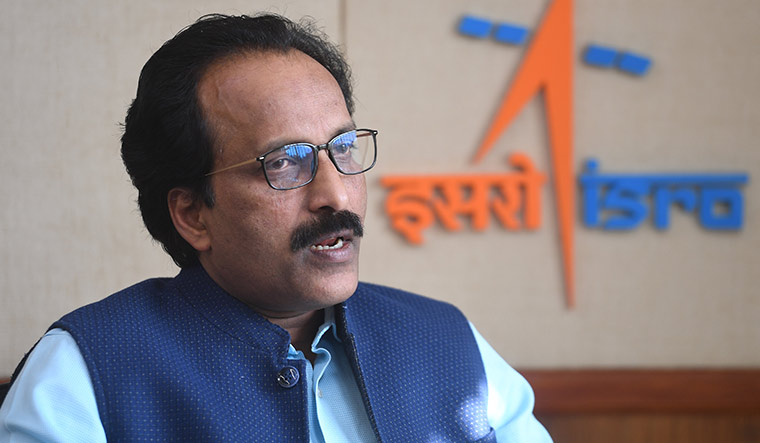The Indian Space Research Organisation (ISRO) is gearing up to send its first astronauts to the Moon by 2040. Following the remarkable success of the Chandrayaan-3 lunar mission, ISRO Chief S Somanath has revealed that four test pilots from the Indian Air Force have been chosen as Astronaut-Designates for this historic mission.
In an exclusive article for the Manorama Yearbook 2024, Somanath unveiled ISRO's future plans, including the highly-anticipated Gaganyaan programme. This program aims to launch a crew of two to three Indian astronauts into Low Earth Orbit (LEO) for a duration of up to three days before safely returning them to a predetermined site in Indian waters.
Currently, the selected astronauts are undergoing rigorous mission-specific training at the Astronaut Training Facility (ATF) in Bengaluru. Somanath, who also serves as the Secretary of the Department of Space and Chairman of the Space Commission, emphasized the significance of the Gaganyaan mission, which involves the development of critical technologies such as a human-rated launch vehicle (HLVM3), an Orbital Module comprising a Crew Module (CM) and Service Module (SM), and life support systems.
Prior to the manned mission, two identical unmanned missions (G1 & G2) will be conducted, along with Integrated Air Drop and Pad Abort Tests to ensure the safety and success of the crewed mission. The Crew Module (CM) has been designed to provide a habitable space with an Earth-like environment for the astronauts, ensuring their safe re-entry. Additionally, a Crew Escape System (CES) has been incorporated to handle emergency situations, ensuring the utmost safety of the crew.
Highlighting the recent achievements of ISRO, Somanath acknowledged the successful launch of the Test Vehicle (TV-D1) on October 21, 2023. This launch marked a significant milestone as it demonstrated the in-flight abort capability of the Crew Escape System, followed by the successful separation and recovery of the Crew Module from the Bay of Bengal by the Indian Navy. These accomplishments have paved the way for subsequent unmanned missions and the much-anticipated manned space mission, which is expected to take place in 2025.
Somanath also emphasised ISRO's commitment to other important missions, such as Aditya L1, India's maiden solar exploratory mission. This mission aims to study the sun from the unique vantage point of Lagrange Point 1, showcasing India's expertise in both lunar and solar research. Launched on September 2, Aditya L1 is poised for a five-year mission, during which it will be inserted into a Halo orbit around Sun-Earth Lagrange Point 1(L1) in January 2024.
Expressing confidence in India's space program, Somanath highlighted the country's ambitious goals, including the commissioning of the Bharatiya Antariksha Station (Indian Space Station) by 2035. Furthermore, India plans to embark on interplanetary exploration, featuring a Venus Orbiter Mission and a Mars Lander, solidifying its presence on the global space stage.


